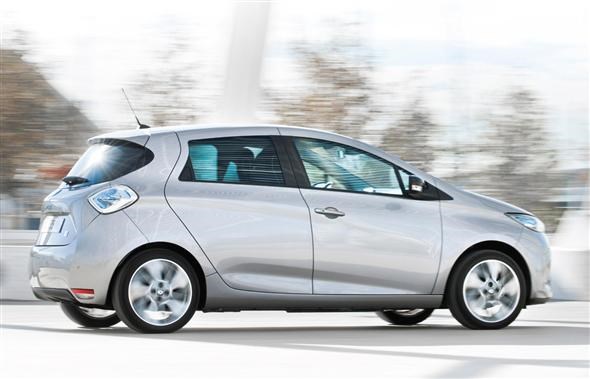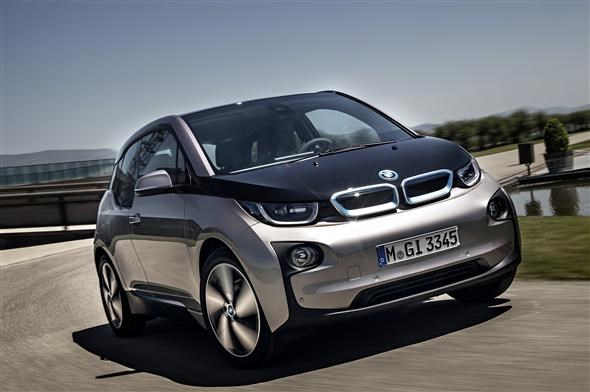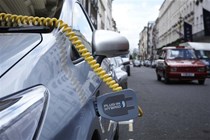Given that company car tax bands are largely dependent on CO2 output, you might expect electric cars to be firmly on the agenda for fleet customers. After all, if we’re talking tailpipe emissions then hybrids and pure electric vehicles are about as low as it gets when it comes to CO2.
The familiar issues of range anxiety and lack of charging infrastructure have so far put fleet buyers and company car drivers off in the most part, however.
With investment in electric car infrastructure continuing apace, more plug-in stations are on the way. The city of Manchester has recently benefitted from a new charging point scheme. Is it time to reconsider electric vehicles as a valid company car choice?
What’s out there?
Electric motoring is a fairly broad church at the moment. Four of the main types of electric and part-electric cars currently on the roads are: pure electric vehicles; hybrids; plug-in hybrids; and range-extender hybrids.
So-called ‘pure electric vehicles’ – those that run on electricity alone – are still quite rare. The Nissan Leaf and Renault Zoe hatchbacks are two examples of the few currently in production, along with the wacky Renault Twizy. They use an electric motor for power and plug in to the grid to charge their batteries.
Hybrids, as the name suggests, use a combination of two forms of power: an electric motor and a petrol or diesel combustion engine. The motor is used for low-speed driving, and when the speed climbs or it runs out of charge the car automatically switches to the conventional engine to power the wheels and charge the batteries. The Toyota Prius is one of the earliest and most well-known examples.
Plug-in hybrids (such as the appropriately-named Toyota Prius Plug-in) are similar with the important difference that they can be plugged-in overnight, so you don’t need to wait until you’re driving for the batteries to charge and can benefit from full electric power from the get-go.
Range extenders (such as the Vauxhall Ampera) also combine electric motors and a combustion engine, but the latter isn’t used to power the car’s wheels. Instead, it generates power for the batteries. The car can travel short distances on battery-power alone, then when charge drops below a certain level the engine kicks in to supply current to the motors and bring it up to charge.
Pros and cons
The primary advantage of electric vehicles from a business point of view boils down to one thing: tax. A pure electric vehicle (i.e. one powered by electricity alone) emits zero local CO2 emissions and therefore currently benefits from zero percent BIK tax.
Many low-emission hybrids are good news from a BIK point of view too, as any car emitting between 1 and 75g/km of CO2 is subject to a low BIK rate of 5 percent. The Chevrolet Volt range extender, for example, emits 27g/km of CO2 and therefore would cost a 20 percent tax payer £29 a month at the time of writing.
This offsets what is often a high purchase price for this type of vehicle: the plug-in hybrid Volvo V60, for example, has a P11d value of more than £48,000 although that doesn’t include the £5,000 electric vehicle government grant available as a discount.
There are benefits to be had for London-based companies and drivers from a congestion charge standpoint, too. Transport for London has recently tightened the criteria for cars and vans exempt from the low emissions discount and only vehicles with CO2 emissions less than 75g/km qualify for a 100 percent discount on congestion charging.
The major downside for pure EVs is the old issue of range anxiety. The Renault Zoe, for example, has a claimed 130-mile range on a full charge but this can be difficult to achieve every day, in all conditions. In the winter, when the battery won’t perform as well as normal due to the colder temperatures and the lights, wipers and heater are called into action, the range is likely to drop considerably.
As a counterpoint, Renault says a daily commute of 100 miles is possible – although the firm suggests that the car should be charged at work to top it up if possible.
Another potential problem is home charging. Many car companies offer fast-charging points fitted at your home and you can use a three-pin plug for slower charging too, but in many cases it simply isn’t practical. The most obvious situation is someone living in a flat – there probably won’t be anywhere practical for a charging point and they’re not going to want to trail a wire out of their kitchen window and down to their car.
Conclusion
Should company car drivers be giving electric vehicles some serious consideration? The answer, essentially, is yes, provided they have a manageable daily commute and a solution to the charging problem. Certainly for London-based drivers the advantages in congestion charging and fuel costs certainly make sense.
For most drivers, however, especially those who cover more A-road than urban miles, going electric is likely to be a bridge too far for now.
Three electric vehicles that could work as a company car:
.jpg)
What is it? Revisions to the Leaf for 2013 have made Nissan’s pure electric hatchback more practical and cheaper to run. Theoretical range has improved from 109 to 124 miles and there’s no BIK tax or congestion zone charge to pay. |

What is it? Renault’s nippy electric hatch is well-suited to city driving. A full charge from a household socket costs around £1 and takes around nine hours but a fast-charge point can take the battery up to 80% charge in 30 minutes. The battery is leased from Renault for a monthly amount which varies depending on annual mileage. |

What is it? On sale towards the end of 2013, the i3 will be available as a pure EV or a petrol-powered range-extender. Electric-only range is claimed to be between 81 and 99 miles during normal use, with greater mileage possible with careful driving. We’ll be behind the wheel before the end of the year for a full review. |
Just so you know, we may receive a commission or other compensation from the links on this website - read why you should trust us.




